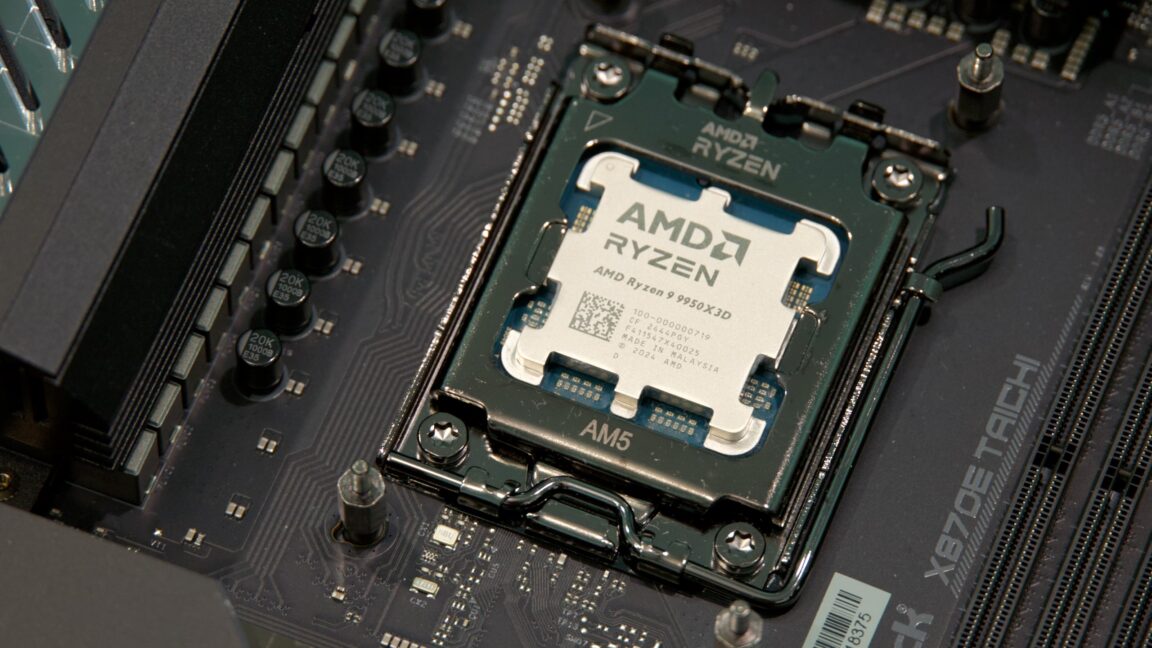
Credit: Andrew Cunningham
AMD's X3D-series Ryzen chips have become popular with PC gamers because games in particular happen to benefit disproportionately from the chips' extra 64MB of L3 cache memory. But that extra memory occasionally comes with extra headaches. Not long after they were released earlier this year, some early adopters started having problems with their CPUs, ranging from failure to boot to actual physical scorching and burnout—the problems were particularly common for users of the 9800X3D processor in ASRock motherboards, and one Reddit thread currently records 157 incidents of failure for that CPU model across various ASRock boards.
In an interview with the Korean language website Quasar Zone (via Tom's Hardware), AMD executives David McAfee and Travis Kirsch acknowledged the problems and pointed to the most likely culprit: motherboard makers who don't follow AMD's recommended specifications. Some manufacturers have historically shipped their AMD and Intel motherboards with elevated default power settings in the interest of squeezing a bit more performance out of the chips—but those adjustments can also cause problems in some cases, especially for higher-end CPUs.
The AM5 socket has already been through a saga like this one before. Shortly after their release in early 2023, some Ryzen 7000-series X3D chips were becoming physically deformed, developing bulges on the bottom that could permanently damage the CPU and bend the pins in the CPU socket. AMD blamed some motherboards' incorrect voltage settings for the problem and put out BIOS updates with more limitations on voltage to fix the problem.
It's also reminiscent of a monthslong process that Intel went through to track down problems with some 13th- and 14th-generation Core CPUs whose performance and stability were degrading over time. Intel had to release multiple waves of fixes to completely iron out the problems—but one major contributing factor, the company said, was motherboard makers whose products strayed too far from Intel's recommended default settings. In the end, Intel ended up extending the warranties of all 13th- and 14th-generation Core CPUs to help cover the damage.
McAfee and Kirsch recommend installing your motherboard maker's latest BIOS updates as they're released, to pick up new default settings as AMD and its partners change them. These BIOS updates also add support for new processors, improve memory compatibility, and patch security flaws, among other things.
McAfee and Kirsch also pointed out that AMD can have slightly more trouble testing and tracking down issues because the long lives of its chipsets and CPU sockets (and AMD's various tools for adjusting power limits and overclocking) create a much wider range of possible system configurations to test. That's especially true for socket AM4 motherboards, where an X370 motherboard from 2017 could theoretically be paired with a current CPU release like the Ryzen 5 5500X3D. But even for AM5, users could be sticking brand-new Ryzen X3D chips into 3-year-old motherboards, an upgrade path with no real equivalent in Intel's ecosystem.

-
 C114 Communication Network
C114 Communication Network -
 Communication Home
Communication Home


